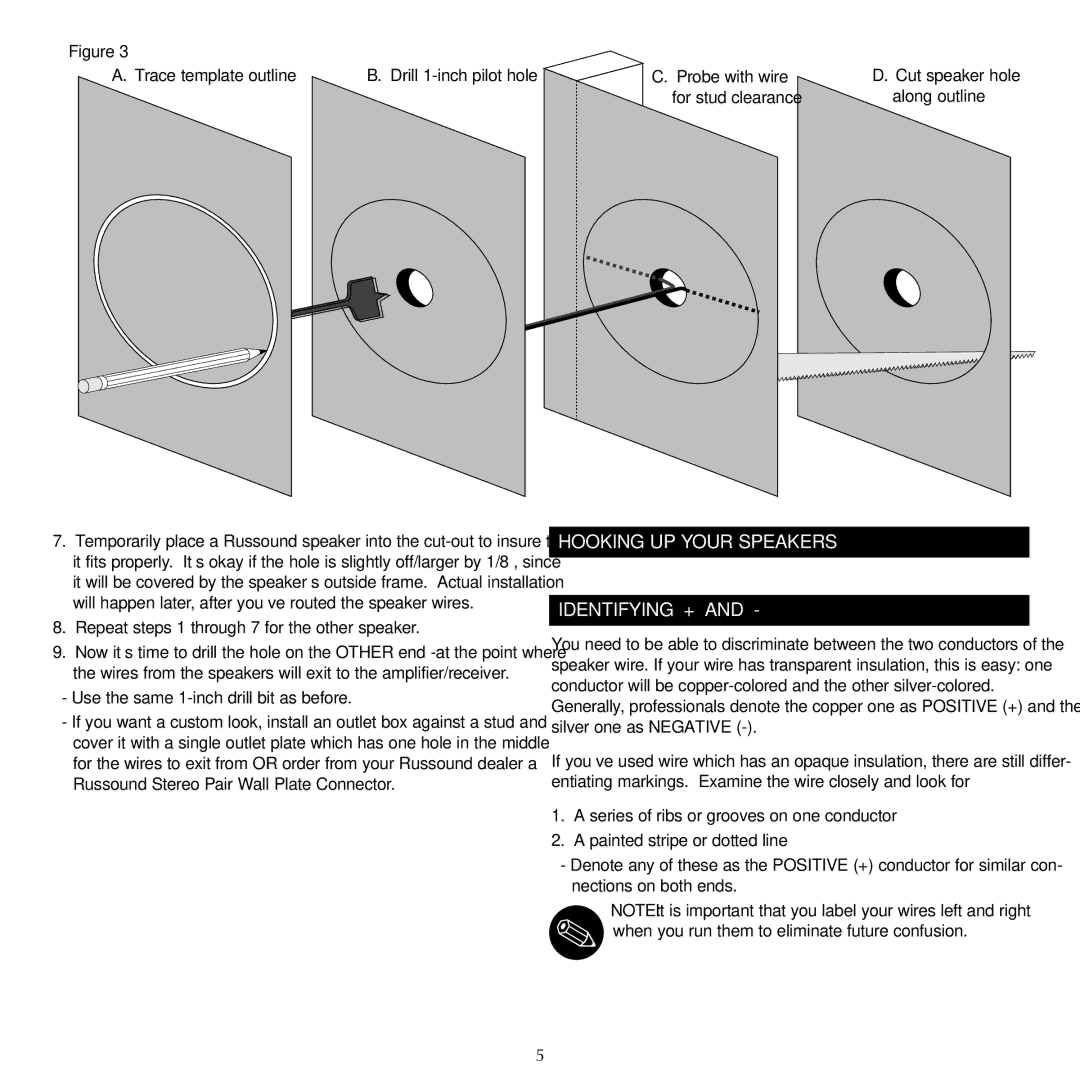SP503.1, SP522.1, SP523.1 specifications
Russound is renowned for its innovative audio products, and the SP series of speakers—SP523.1, SP503.1, and SP522.1—showcase the brand's commitment to excellence in sound quality and design. Each model in the SP series is engineered to deliver exceptional audio performance, making them ideal for both residential and commercial installations.The SP523.1 is a standout with its dual 5.25-inch woofers and a 1-inch soft dome tweeter, allowing for a rich and immersive listening experience. Its frequency response ranges from 60 Hz to 20 kHz, ensuring that both low-end bass and high-frequency notes are well represented. Designed for versatility, the SP523.1 can be used in various configurations, including stereo pairs or as part of a multi-room audio system.
The SP503.1, on the other hand, focuses on seamless integration into any room’s décor. With a low-profile design and an elegant finish, these speakers bring aesthetic appeal without compromising sound quality. The SP503.1 features a 5.25-inch woofer and a 1-inch tweeter, ensuring clear and balanced audio reproduction. Its efficiency allows it to perform well even in large spaces, making it an excellent choice for home theaters or entertainment rooms.
Finally, the SP522.1 offers a slightly different approach with its coaxial 6.5-inch driver design, which provides a more comprehensive soundstage by integrating the woofer and tweeter into one unit. This design minimizes phase issues and enhances audio clarity across a wider listening area. The SP522.1 is particularly well-suited for installations where space is a concern but quality cannot be compromised.
All models in the SP series feature robust construction and high-quality materials, ensuring durability and longevity. They also include technologies like high-efficiency drivers and advanced crossover networks, which help deliver a smooth and balanced sound profile across different listening environments.
In summary, the Russound SP523.1, SP503.1, and SP522.1 represent a significant advancement in audio technology, providing users with a variety of options tailored to their unique sound requirements while maintaining the highest standards of quality and performance.

